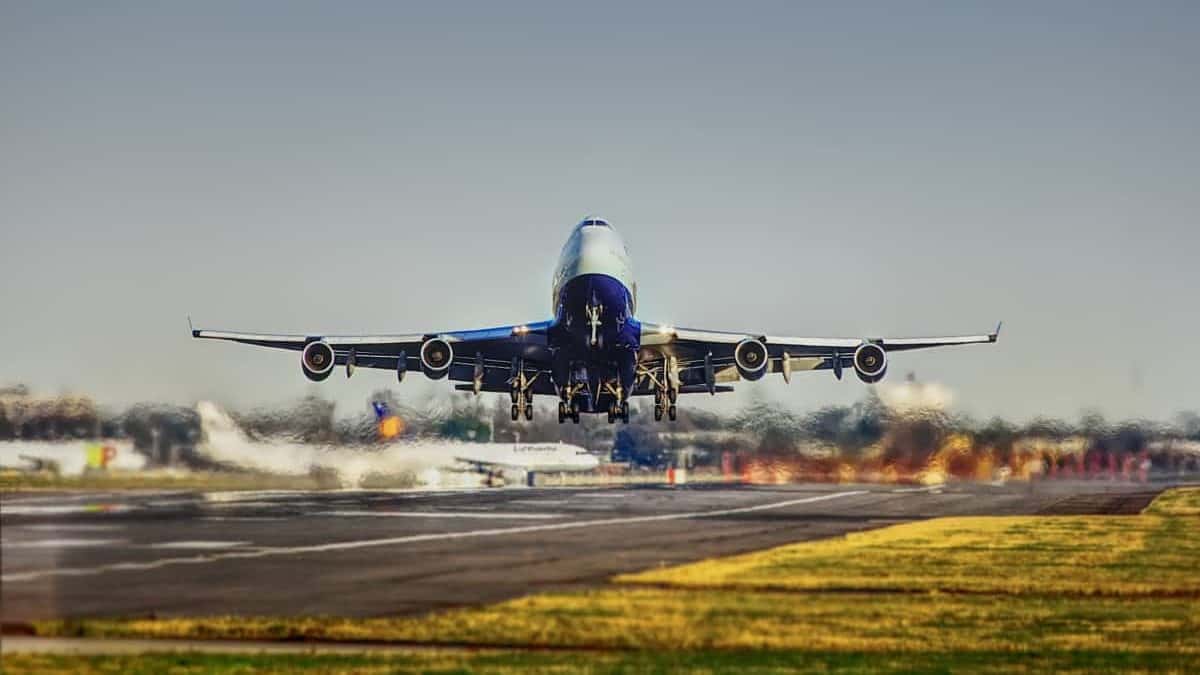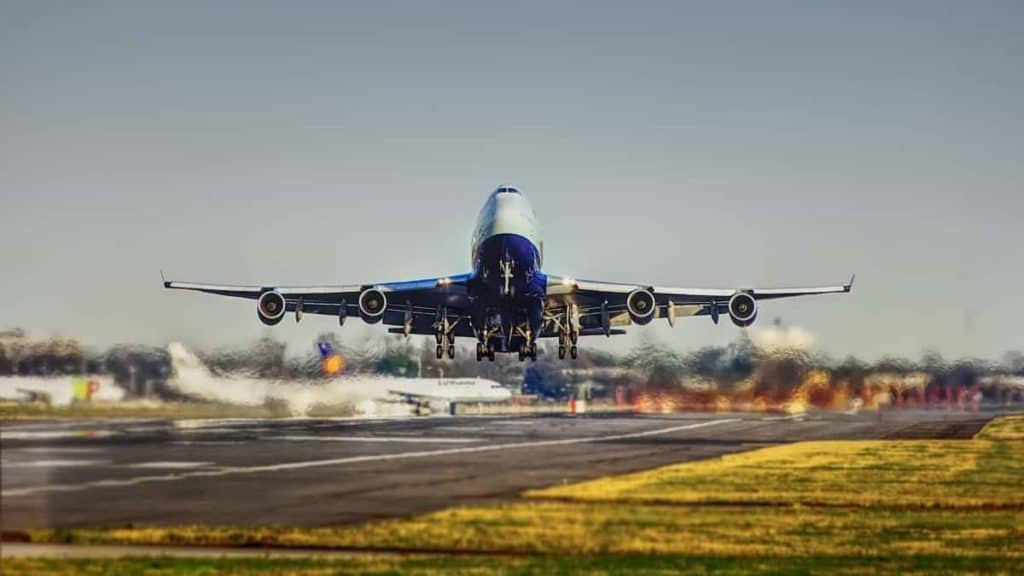
If you have a keen eye you may have been sat in an airport terminal and watched the airplanes landing then all of sudden they seem to be landing and taking off from the other direction. There is a method to the madness here and it all has to do with the wind.
Why Do Airplanes Takeoff into the Wind?
Airplanes need airflow over the wings for it to generate lift. The faster the airflow, the more lift is generated. By taking off into the wind the wind velocity itself adds to the speed of the air flowing over the wing allowing the aircraft to lift off sooner than if there was no wind.
Aircraft have two speeds that are of concern when taking off:
- The ground speed of the aircraft – The speed its shadow moves over the ground
- The airspeed over the aircraft – the speed the wind passes over the wings
Taking off into the wind allows the pilots to lift off the ground at a slower ground speed and using less distance.
For Example:
Imagine a plane sitting stationary on a runway on a calm day. At that moment, it has zero ground speed and zero airspeed.
If a 20-knot-wind is blowing at the airplane from the front (headwind), the plane will have an airspeed of 20 knots, and a ground speed of zero.
Below is a takeoff distance comparison of a headwind, no wind, and tailwind. Each aircraft shows its point of liftoff on the runway:
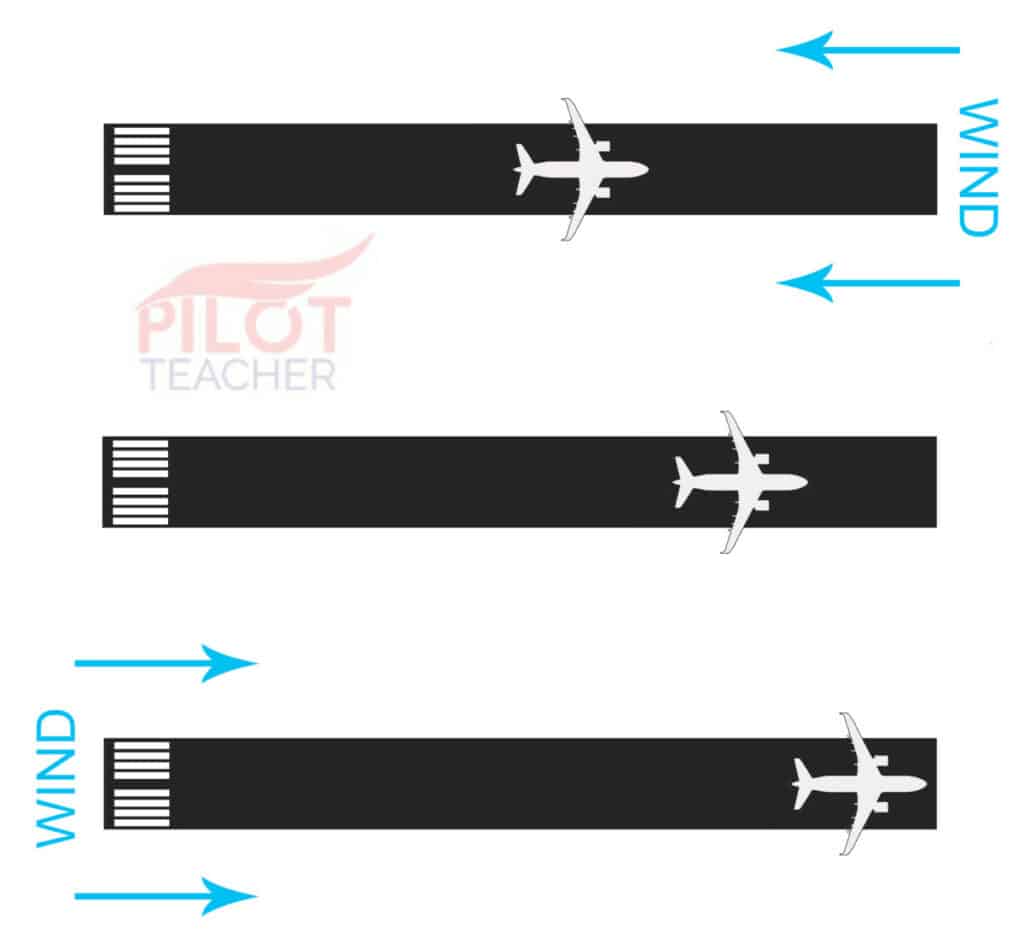
Assuming our plane has a takeoff speed of 120 knots airspeed with no wind, when facing into the wind, it would already have a 20 knot head start before it even moved. For it to attain its takeoff speed, it would have to accelerate to 100 knots ground speed. This would give it a 120 knots airspeed at liftoff.
With no headwind, it would need to accelerate to 120 knots groundspeed to lift off. This means it travels further down the runway.
If it then took off facing the direction the wind is blowing (tailwind), it would have to achieve a ground speed of 140 knots to lift off at 120 knots airspeed as its ground speed while stationary would be -20 knots. This would take even more runway to reach takeoff speed.
The problem with covering more runway before lifting off (rotating) is that the plane has less runway remaining to stop in case of an aborted takeoff. This could cause it to overrun if they were taking off from a short runway.
For airports in high altitudes, hot temperatures, and humid weather, taking off and landing into the wind is very critical because air becomes less dense, making the generation of lift harder. Landing into a headwind helps keep liftoff speeds and takeoff roll to a minimum.
Headwinds Help to Generate Lift and Tailwinds Hinder Generating Lift
Learn More…
Try These Articles:
* What Do Runway Light Colors Mean?
* What are the Top 10 Busiest Airports in the World?
Before takeoff pilots will calculate the estimated takeoff distance using the current atmospheric conditions and the weight of the airplane. They will then add on the distance required to abort and come to a stop and see if the runway available has the required length to accomplish with spare tarmac remaining.
Here are Some Typical Takeoff Distances for Fully-Loaded Airplanes:
| Airplane | Takeoff Distance |
|---|---|
| ATR 72-600 | 4,485 feet or 1,365 meters |
| Airbus A220-100 | 4,800 feet or 1,460 meters |
| Airbus A318 | 5,840 feet or 1,780 meters |
| Boeing 737-100 | 6,000 feet or 1,830 meters |
| Boeing 767-200 | 6,300 feet or 1,900 meters |
| Airbus A380 | 9,800 feet or 3,000 meters |
| Boeing 747-8 | 10,200 feet or 3,100 meters |
If you would like to know how long airport runways are please check out this article:

Join My Newsletter & Get Great Tips, Information and Experiences To Help You Become a Superb Pilot!
Why Do Airplanes Land into the Wind?
Airplanes land into wind to allow them to approach and touchdown at a slower ground speed while maintaining the required airspeed over the wings. Slower ground speeds allow the airplane to slow and taxi clear of the runway sooner and reduce wear on tires and brakes due to the slower landing speed.
When on an approach to land airplanes need to maintain a minimum airspeed over their wings to prevent them from losing lift and stalling. Stalling at a slow speed and low altitude would be near impossible to recover.
When landing into a headwind it allows the aircraft to be moving over the ground slower for a given airspeed over the wings.
For Example:
Approaching at 120 knots with zero wind = Groundspeed of 120 knots
Approaching at 120 knots with 20 knot headwind = Groundspeed of 100 knots
Approaching at 120 knots with 20 knot tailwind = Groundspeed of 140 knots
Just like when taking off, using the headwind to increase lift over the wing allows the actual speed of the aircraft to be lower when touching down on the runway.
By using the headwind it gives the following advantages:
1. Rolling Distance
When touching down at a slower speed the amount of runway used to slow the aircraft is far less compared to a higher touchdown speed. This allows for more runway to be available if the airplane needs to complete a Go-Around and take off again, or if it develops a fault with the braking systems and needs longer than usual to stop.
2. High Speed Exits
Whenever an aircraft is on a runway that runway cannot be used by another aircraft for landing. Most large international airports have inclined ‘High-Speed’ taxiways leading off the runways so that aircraft can maintain a high taxi speed to vacate the runway as fast as possible.
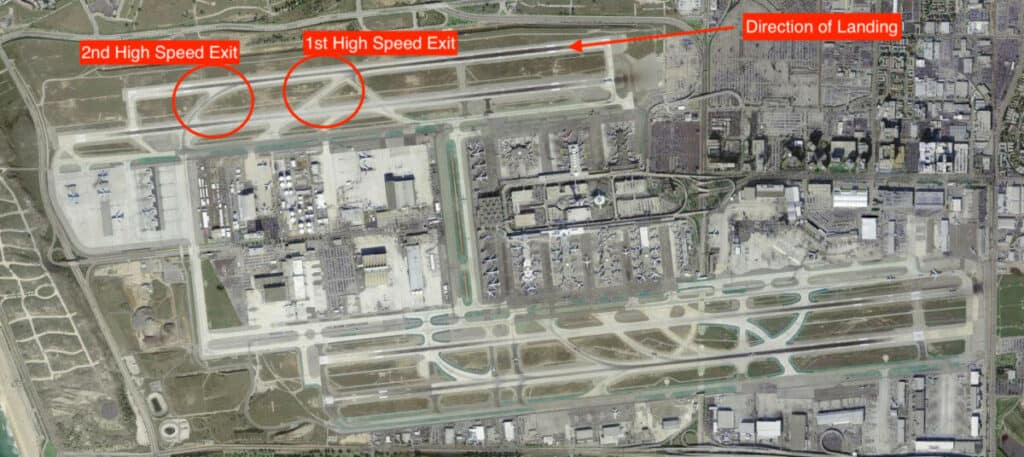
By landing with a headwind it allows the airplane a greater chance of slowing sufficiently to use one of the first high-speed taxiways rather than just missing it and then having to taxi to the next. This extra 20 seconds adds up over the course of a day and reduces the number of landing airplanes the airport can accommodate.
3. Aircraft Wear
Braking an aircraft is a violent affair, especially if it has had to return to land because of a malfunction and is at its maximum landing weight. For example, the Boeing 747-400 has a maximum landing weight of 630,000 lbs (246,750 kg) and aims to touchdown at around 145-150 knots.
Slowing this amount of inertia places incredible stress and wear on the tires, wheels, axles, bearings, and brakes. By reducing the touchdown speed 20-30 knots using a good headwind greatly increases the lifespan of these parts.
The less the braking components need to be replaced the more money the airline saves and the more time the aircraft can be in service making flights.
Why Do Airports Change Landing & Takeoff Direction?
Airports are designed so their main runways are aligned with the local prevailing winds. When the wind changes direction the landing and departing runway can be switched 180° to the opposite end or use a runway running perpendicular. Air traffic controllers always try to operate the aircraft into the wind.
Winds, however, change direction. In such cases, ATC will change the general direction of traffic into and out of the airport so that planes can land and take off into the wind. This is why runways have different designation markers on both sides, and one strip of runway is considered as 2 independent runways; to allow bidirectional usage of one runway.
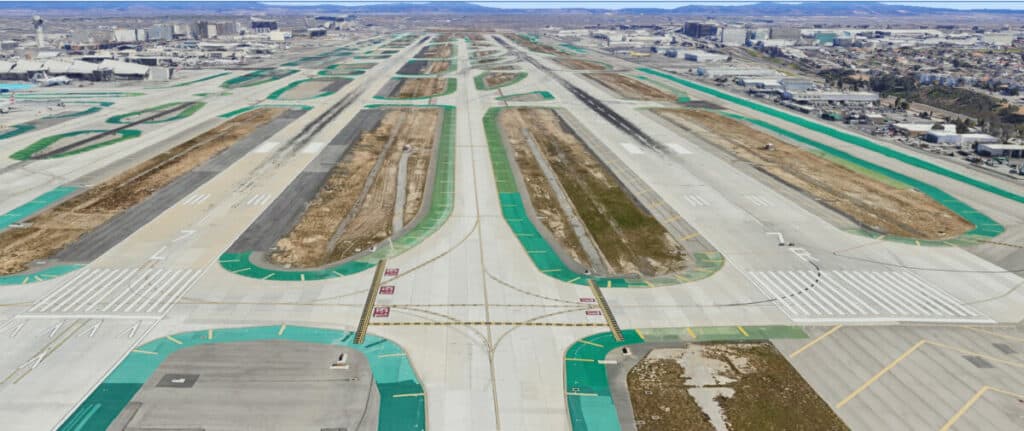
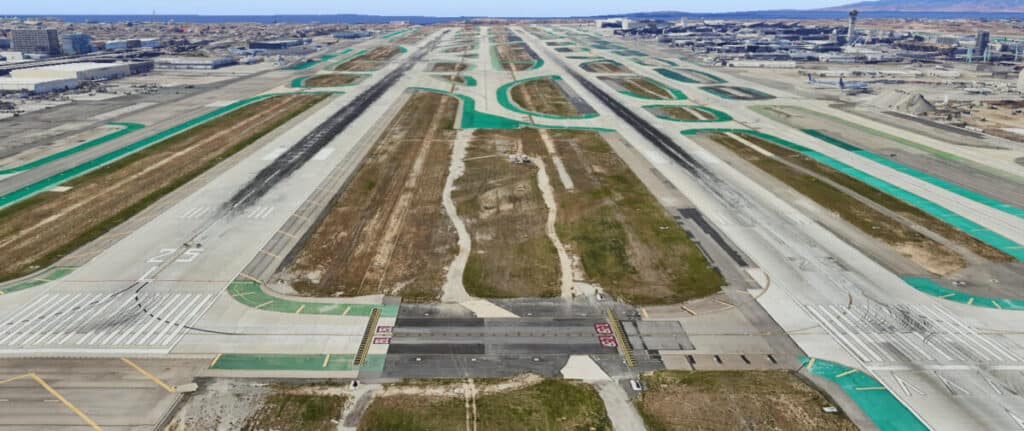
For example, at Los Angeles International Airport, runways 7R and 25L are on the same runway, with the 7R marker being on one end and 25L on the other. These are considered two independent runways as one can land from the 25L side or the 7R side.
Some airports have crisscrossed runways which help to cater for winds blowing from all sides. Dallas Fort Worth below is a great example of this. Air traffic control will orientate the arriving and departing traffic to use the runway which lines up closest to a headwind.
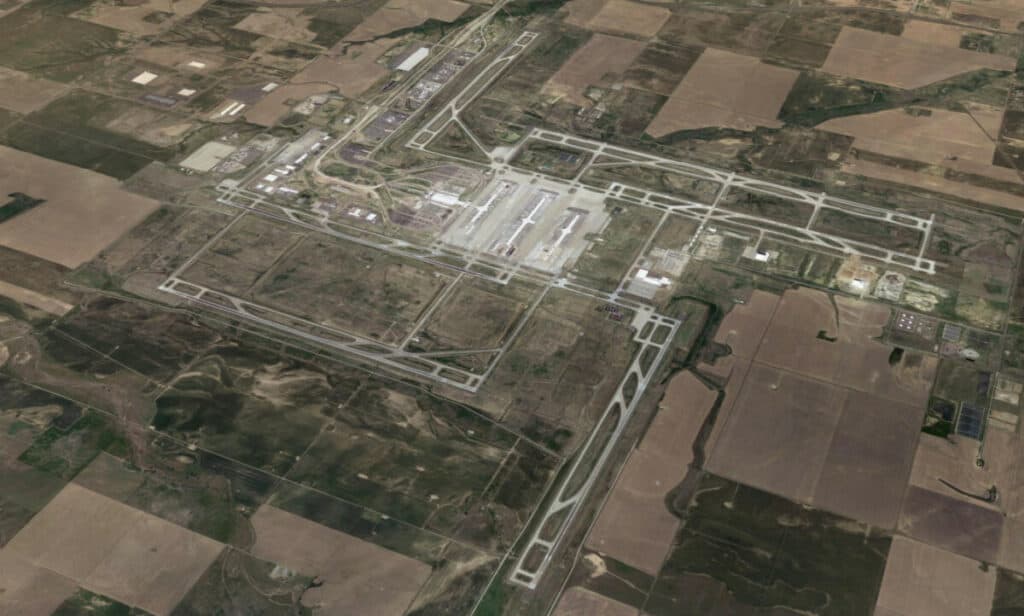
For unmanned airports, pilots use Automated Weather Observation System (AWOS) to find which way the wind is blowing. They can then decide which way to land to get the best out of the headwind.
Learn More…
Try These Articles:
* This Is Why Pilots Reduce Thrust After Takeoff?
* Why Do Some Airplanes Turn Immediately After Takeoff?

